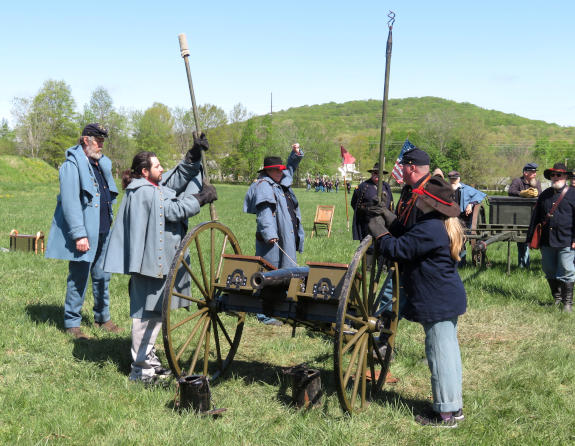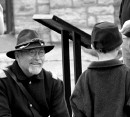NEWS OF 150 YEARS AGO
January/February 1861
From The Missouri Democrat, Saturday, February 2, 1861.
BREECH-LOADING GUNS AND PROJECTILES.
[From the Scientific American.]
It may seem strange to many persons that the name of the present Emperor of France should have been so often mentioned in articles which have appeared in our columns on implements of war. The reason of this will be told in a few words. Napoleon III is the ruling spirit who has effected the entire revolution that has recently taken place in the equipment of soldiers in all armies, with the rifle instead of the musket; and he has given more attention to this subject, perhaps, than any other person living. About six years ago he published a treatise on the “Past and Future of Artillery,” and laid down as a fundamental guide to all these who sought improvements in gunnery that “such implements, to be really serviceable, must be simple.” “Whatever is complicated,” he said, “will fail in producing conclusive results in warfare.” He condemned routine as tending to retard improvements, and stigmatized those persons as stupid who were “too much enamored of old ways and practices.”
The idea of simplicity in implements of war has been adhered to by Napoleon with great tenacity. The Whitworth and several other breech loading cannon, famous in story, were offered to him, but it is stated that he rejected them all; and we think he was right. It appears to us that it is much easier to load a heavy gun at the muzzle than at the breech, because a movable breech piece for a cannon is so very unwieldy, that it cannot be so easily handled, as the charge and ramrod at the muzzle. Such guns are also liable to get out of order by their breech screws expanding with heat and stripping by the recoil of the discharge. They have one advantage, however, and only one; that is, they are well adapted for washing out, as they can be rapidly sponged by thrusting the swab through them from end to end. But this does not afford sufficient compensation for their defects.
Common breech loading hand rifles are liable to leakage, by the frequent opening and shutting of the breech. To avoid this in Sharpe’s [sic} rifles, they can be loaded at the muzzle and the leakage prevented. When one requires to be “wiped out,” the opening of the breech affords a most convenient arrangement for this purpose. Small arms may be more complicated than large guns, without being subject to the same objections, as the light breech piece of the former may be very easily moved, while this can never be the case with the latter.
Capt. J. Norton, a retired British officer, who has been an active and scientific experimenter for several years with firearms and projectiles, has recently sent us a little volume containing notices of his military inventions; and in it we find the description of a curious projectile, which may render iron war ships more dangerous than wooden ones. He says: “Observing that cannon shot, on passing through a ship’s side, left a perforation that was easily plugged up, I tried an experiment with a hollow punch, and fired it from a rifle into a plank of wood, when I found it cut a hole like a wad-cutter.”
It would appear reasonable that, by arming large projectiles for rifled cannon in the form of hollow punches, having steel lips, that they would bore their way through a six-inch plate of iron, every shot cutting out a clean hole. These holes can be plugged more easily than those formed with cannon balls, because the latter are always shattered around the edge; still, it does not appear unreasonable that, with such punch projectiles sent spinning from cannon into the sides of such a war ship as the Warrior, that a hole might soon be made in her iron hull sufficiently large for a whale to pass through.
Another war missile which Captain Norton has invented is a frictional hand-grenade. It consists of an explosive shell to be suspended over the wall of a fort by a cord, so that when a storming party makes and attacks, the grenade can be exploded to scatter destruction around, by simply drawing the cord, which ignites a friction match communicating with the charge in the shell. With such grenades (any number may be used) a fort may be effectually defended against a strong storming party by a very few men.
Another destructive missile described by Captain Norton consists of a conical shell bullet for rifles, and a few years since he forwarded to us some samples of these explosive agents. They are cast with a chamber inside, which is charged with percussion powder, and each is furnished with a small pin situated at the point. When fired from a rifle, the charge explodes when the point strikes; and it will then set fire to any combustible material around it. With such rifle shells, Colonel Jacobs set fire to ammunition wagons at a thousand yards distance in India. He used short carbine rifles, about two feet in length, and bullets about one ounce in weight. Such missiles would be terribly destructive when used by skilled infantry or light cavalry.



